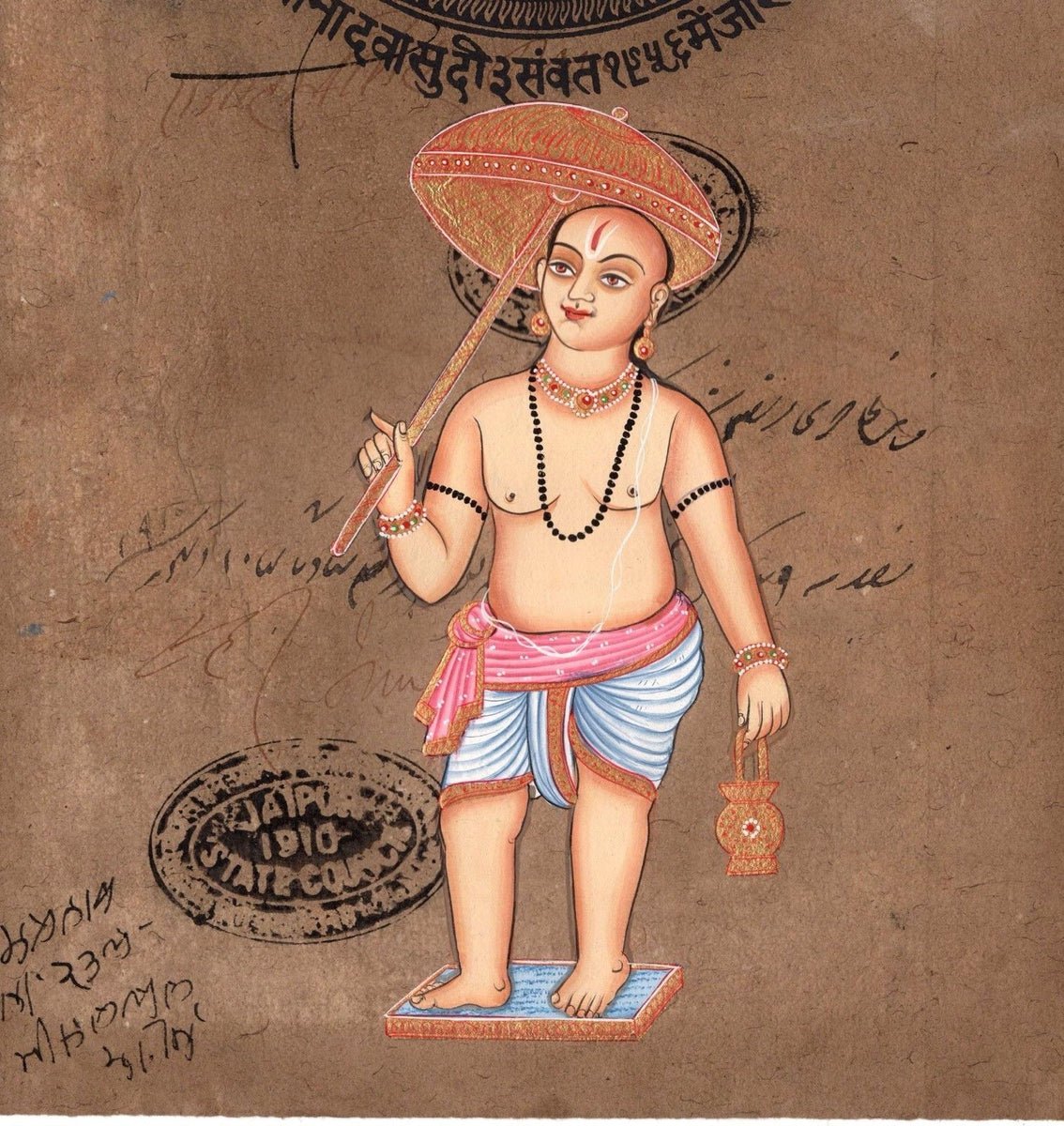The Vamana Purana
The Vamana Purana is one of the eighteen Mahapuranas, a category of ancient Hindu texts that encapsulate a wealth of spiritual, mythological, and cultural knowledge. Named after Vamana, the dwarf incarnation of Lord Vishnu, this Purana holds a unique place in the Puranic tradition. While it is not as widely studied or celebrated as texts like the Bhagavata Purana or Vishnu Purana, the Vamana Purana offers profound insights into cosmology, theology, and the divine exploits of Vishnu, particularly in his Vamana form. This article delves into the origins, structure, content, and significance of the Vamana Purana, shedding light on its contributions to Hindu thought.

Origins and Classification of Vamana Purana
The Vamana Purana is classified as a Vaishnava Purana, meaning it primarily glorifies Lord Vishnu and his avatars (incarnations). Like other Puranas, it is traditionally attributed to the sage Vyasa, the legendary compiler of the Vedas and the author of the Mahabharata. Scholars estimate that the text was composed between the 9th and 11th centuries CE, though its oral traditions and core stories likely predate this period. The Purana is believed to have evolved over time, with later interpolations reflecting the socio-religious context of medieval India.
The Vamana Purana is considered a “minor” Purana in terms of its prominence and length compared to giants like the Skanda Purana or Padma Purana. It consists of approximately 10,000 verses, though the exact number varies across manuscripts due to regional differences and scribal additions. Despite its modest size, it is rich in narrative diversity and theological depth.
Key Themes and Narratives
The Vamana Purana weaves together mythology, cosmology, and moral teachings. Below are some of its central themes and stories:
1. The Vamana Avatar
The titular narrative of the Vamana Purana revolves around Vishnu’s fifth incarnation, Vamana, the dwarf. This story is a cornerstone of Vaishnava theology and is recounted with vivid detail. According to the text, the demon king Bali, a benevolent yet ambitious ruler, had gained control over the three worlds (earth, heaven, and the netherworld) through his penance and prowess. The gods, led by Indra, sought Vishnu’s help to restore cosmic balance.
Vishnu incarnated as Vamana, a humble Brahmin dwarf, and approached Bali during a grand sacrificial ceremony. Bali, known for his generosity, offered to grant Vamana any boon. The dwarf requested a modest three paces of land measured by his tiny feet. Bali agreed, unaware of Vamana’s divine nature. In an instant, Vamana grew into a colossal form (Trivikrama), covering the earth with his first step, the heavens with his second, and leaving no space for the third. Bali, recognizing Vishnu’s supremacy, offered his own head for the third step, symbolizing his surrender. Pleased with Bali’s devotion, Vishnu granted him dominion over the netherworld (Patala) and promised to protect him.
This tale underscores themes of humility, devotion, and the triumph of divine order over unchecked ambition. It also highlights Vishnu’s role as a preserver who restores dharma (cosmic law) without resorting to violence.
2. Cosmology and Geography
The Vamana Purana contains elaborate descriptions of the universe’s structure, including the seven continents (dvipas), oceans, and sacred rivers. It portrays the earth as a flat disc supported by divine forces, with Mount Meru at its center a common cosmological model in Puranic literature. These sections reflect the ancient Indian understanding of geography blended with spiritual symbolism, where physical landscapes mirror divine realms.
3. Genealogies and Dynasties
The text traces the lineages of gods, demons, and human kings, connecting mythological events to historical dynasties like the Solar (Suryavansha) and Lunar (Chandravansha) lines. These genealogies serve to legitimize royal lineages and emphasize the interplay between divine and human realms.
4. Devotion and Rituals
Bhakti (devotion) is a recurring theme in the Vamana Purana. The text extols the virtues of worshipping Vishnu through prayers, rituals, and pilgrimages to sacred sites like Prayaga (modern-day Allahabad) and the Ganges River. It also provides instructions for performing vratas (vows) and other religious observances to attain spiritual merit.
5. Other Avatars and Deities
While the Vamana avatar dominates, the text briefly mentions Vishnu’s other incarnations, such as Varaha (the boar) and Narasimha (the man-lion). It also includes stories of Shiva, Brahma, and various sages, reflecting the Purana’s inclusive approach to Hindu divinity, though Vishnu remains the focal point.

Significance in Hindu Tradition
The Vamana Purana occupies a special niche within Hindu literature as a text that balances mythology with practical spirituality. Its emphasis on the Vamana avatar reinforces Vishnu’s role as a compassionate deity who resolves conflicts through wisdom rather than force a contrast to the martial exploits of avatars like Krishna or Rama. This narrative resonates with the ideals of humility and surrender, which are central to Vaishnava bhakti traditions.
Additionally, the Purana serves as a repository of cultural and religious knowledge, preserving stories and practices that shaped medieval Hindu society. Its geographical descriptions and pilgrimage references highlight the importance of sacred landscapes in fostering a sense of unity among diverse communities.
Manuscripts and Modern Relevance
The Vamana Purana survives in numerous manuscripts scattered across India, with some variations in content and verse count. It has been translated into regional languages like Telugu and Kannada, reflecting its influence in South India, where the Vamana story holds particular reverence.
In contemporary times, the Vamana Purana is less studied than its more famous counterparts, but it remains a valuable resource for scholars of Hindu mythology and theology. Its teachings on devotion, humility, and cosmic harmony continue to inspire spiritual seekers, while its narratives enrich the tapestry of Hindu storytelling.



